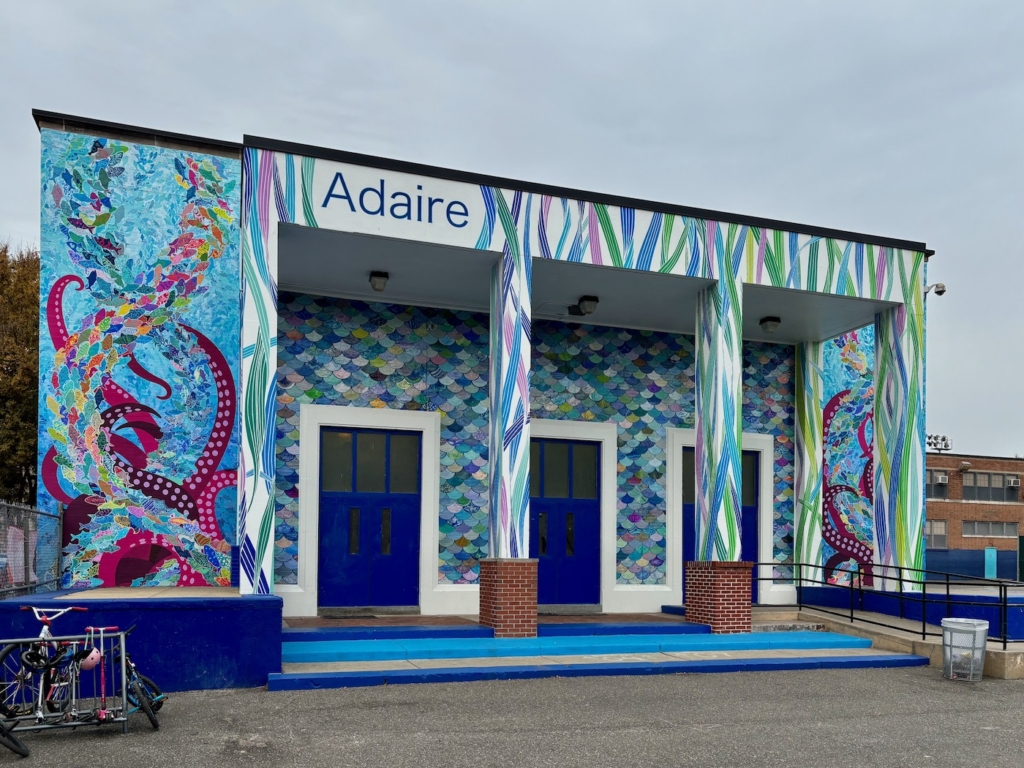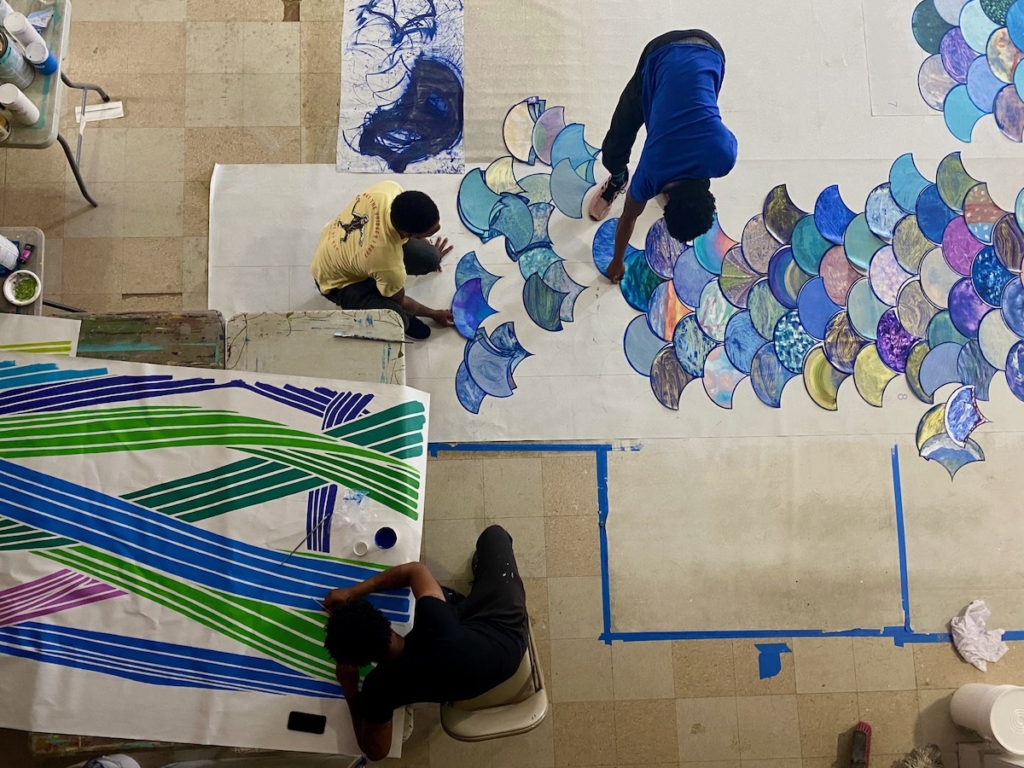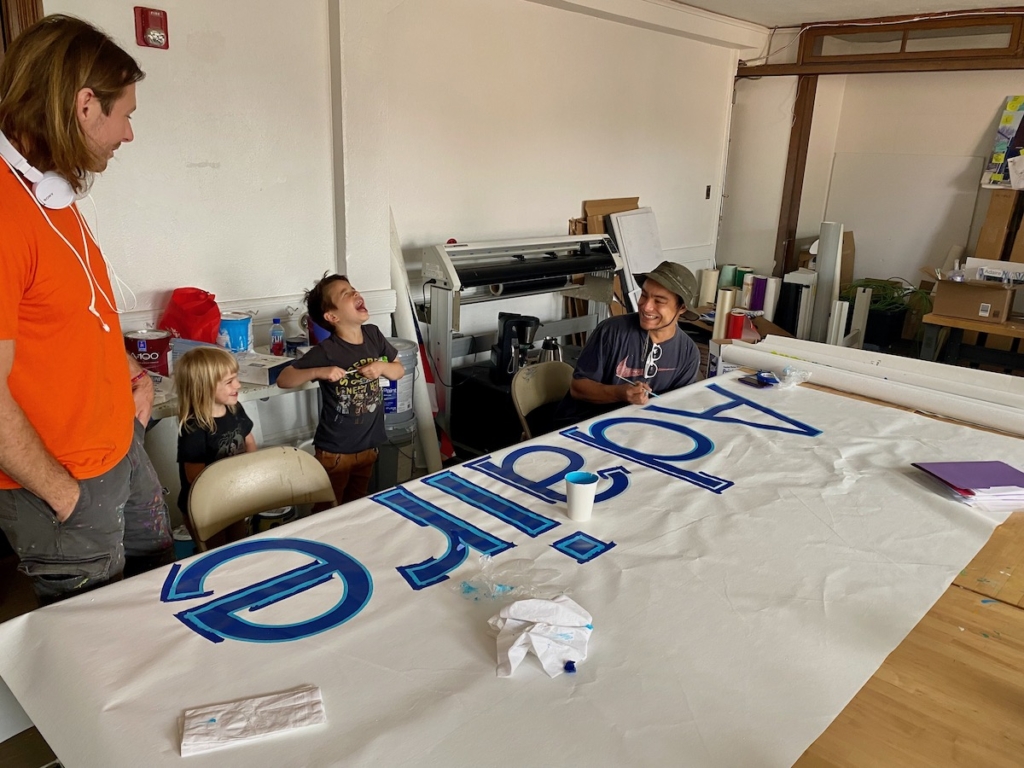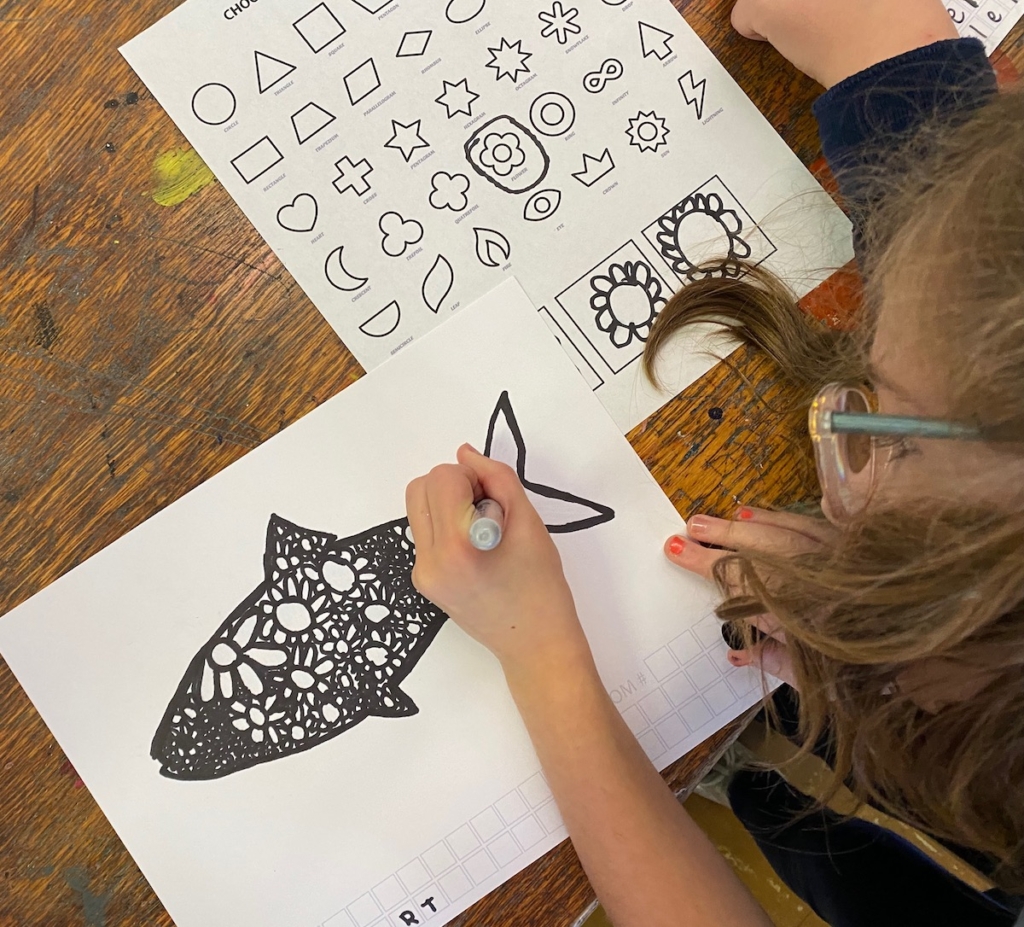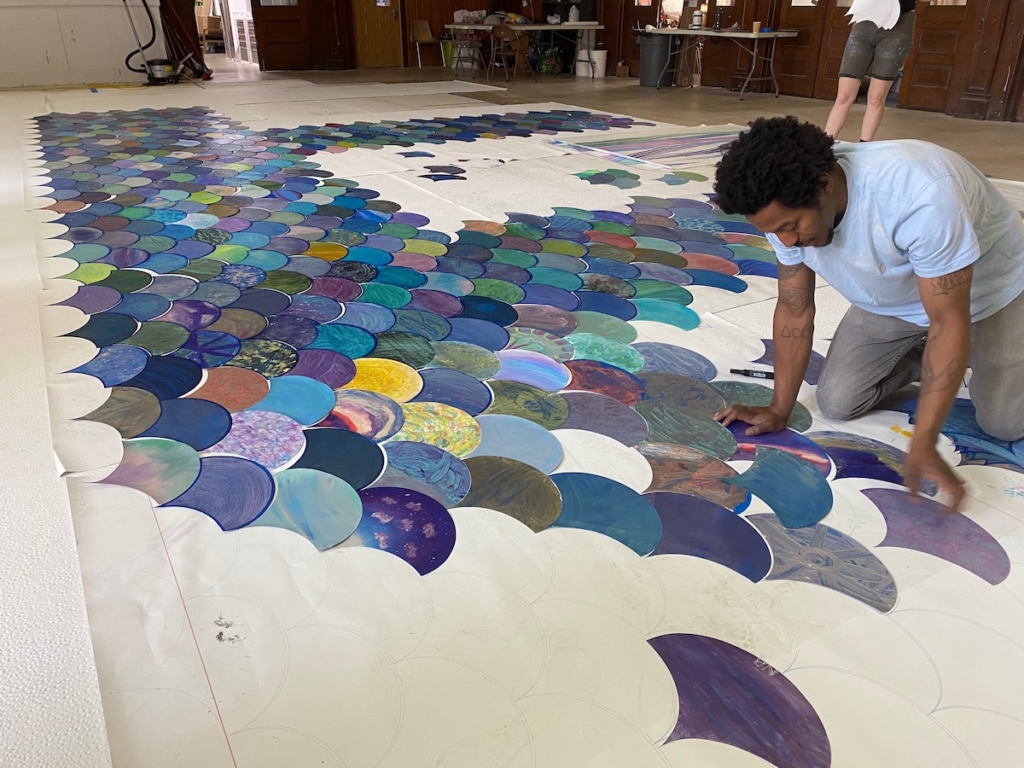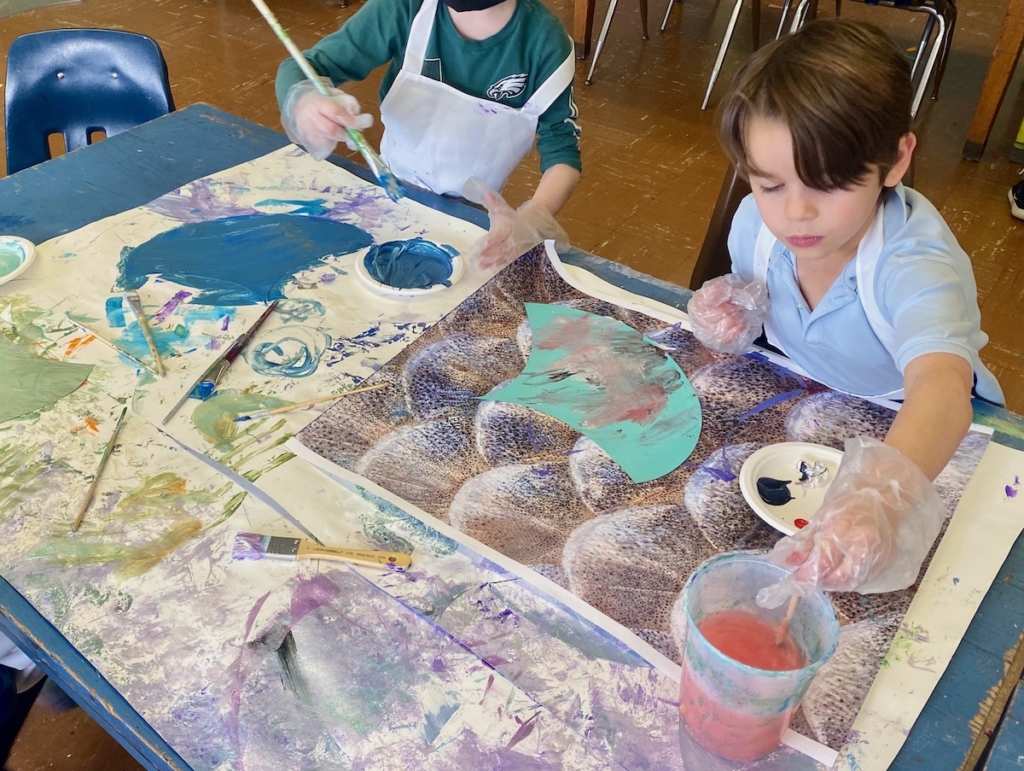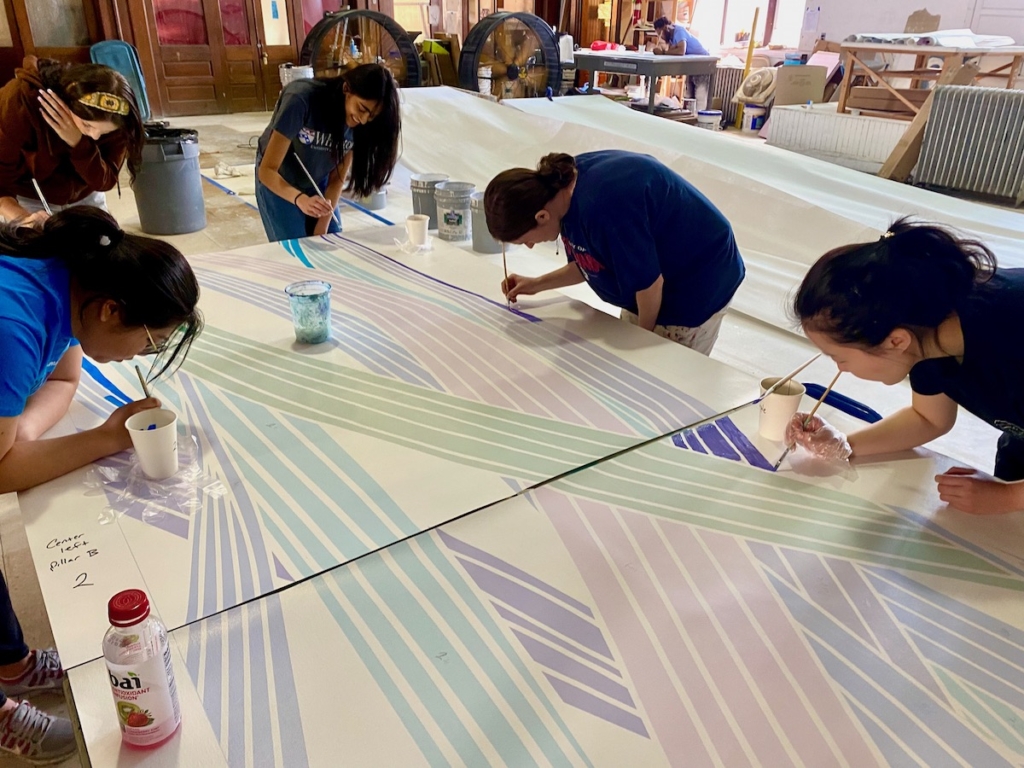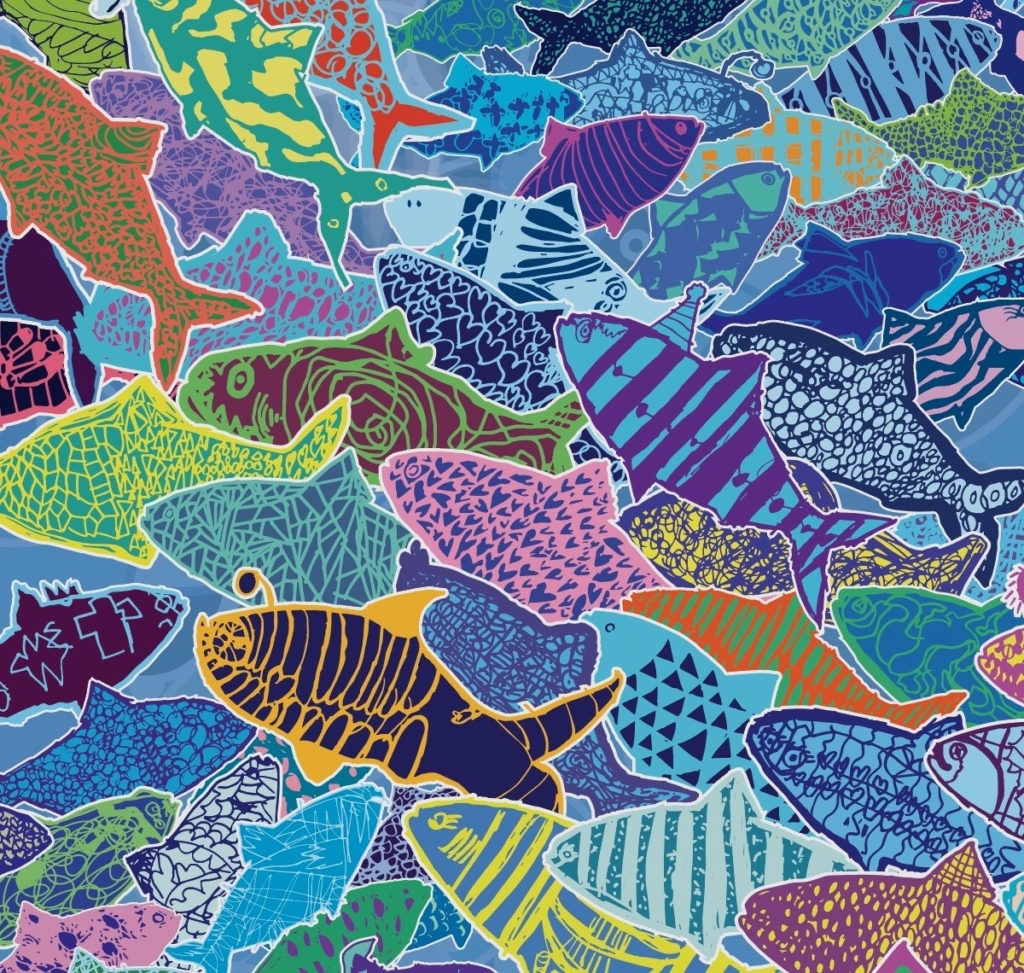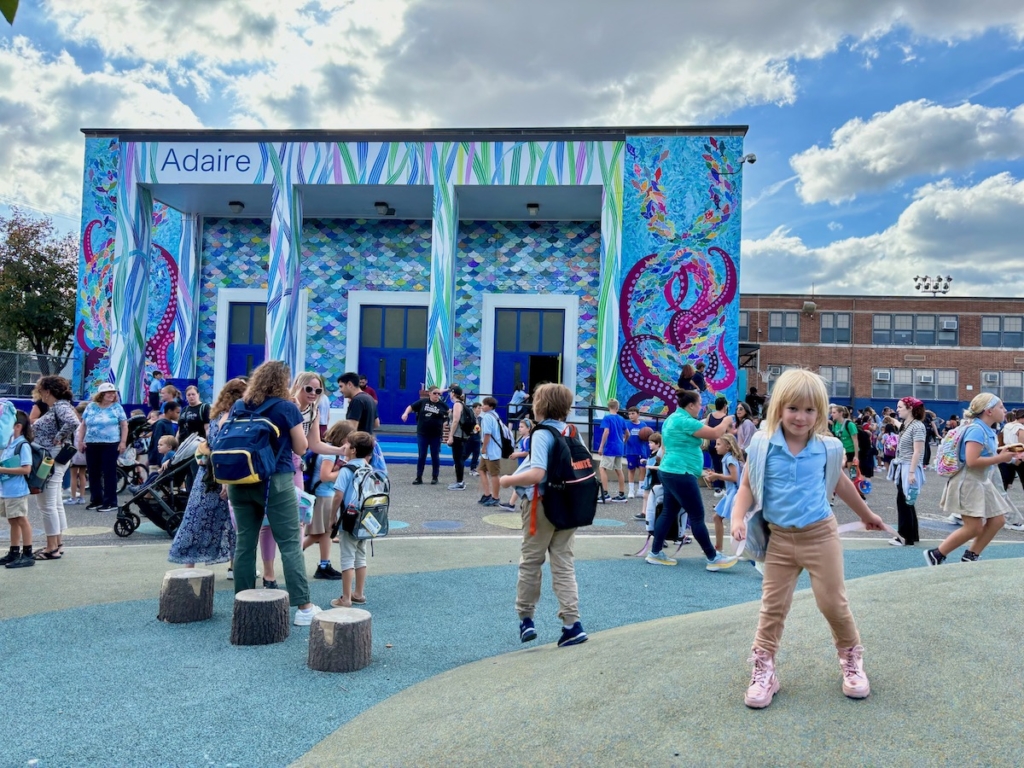At the entranceway of Alexander Adaire School is a mural that brightens the learning space with marine life. Fish, octopi and water plants cover every inch of it.
“Ocean Songs” was created by Benjamin Volta with the help of students and teachers at Alexander Adaire in Fishtown. The idea for the mural came from the experience of Volta’s son, Thor, when he got his first pet fish.
“We were all fascinated by the iridescent scales on the fish,” Volta recalled, “and he suggested that we somehow include fish scales in the mural that we were starting to plan for his school.”
Volta got involved with Alexander Adaire because his four children are students there. That meant his artistry, natural ability to delegate and teamwork could shine.
The school holds a Friends of Adaire meeting every month. Before gathering with the students to create the mural, Volta held brainstorming sessions at those meetings to get the community involved and survey their perspectives. Respondents offered insights and even made drawings to show what they hoped the mural would reflect.
The consensus was overwhelming for an aquatic scene reminiscent of the neighborhood: Fishtown.
Recognizing the sheen on the scales of the fish, Volta proposed laser cutting scales with cloth and using iridescent paint. The community ran with it and filled in the missing pieces to the mural puzzle.
The school of fish forming a double Helix is also a nod to Volta’s background working with science and math teachers.
“I had resisted the inclusion of an octopus,” he acknowledged, “but there were a few students that kept insisting on including them. The mural did not really come alive until we included the tentacles.”
Along with the community input, Volta remained open to ideas and excited by differences of opinion. He wanted to include his children’s voices and those of as many Alexander Adaire students as possible.
Volta has in the past collaborated with art teacher Michelle Jones and has partnered with STEM teacher Adam Lewis, working with students interested in both the curriculum and exploring art in conjunction with nature.
In the STEM environment, Volta mentored the students through the process of measuring the mural building and preparing its surface.
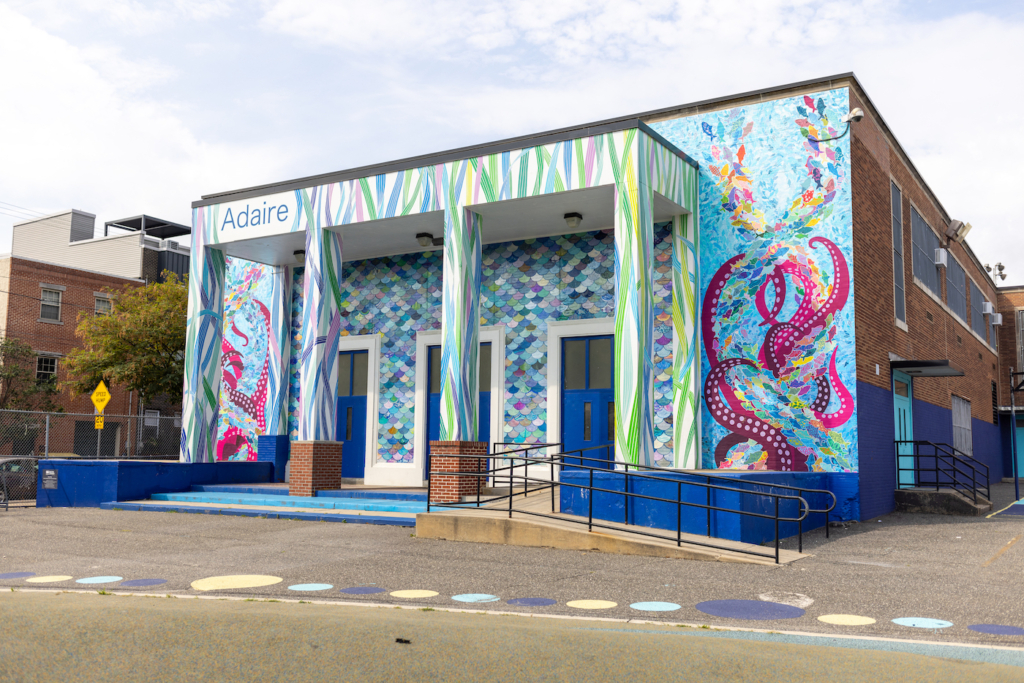
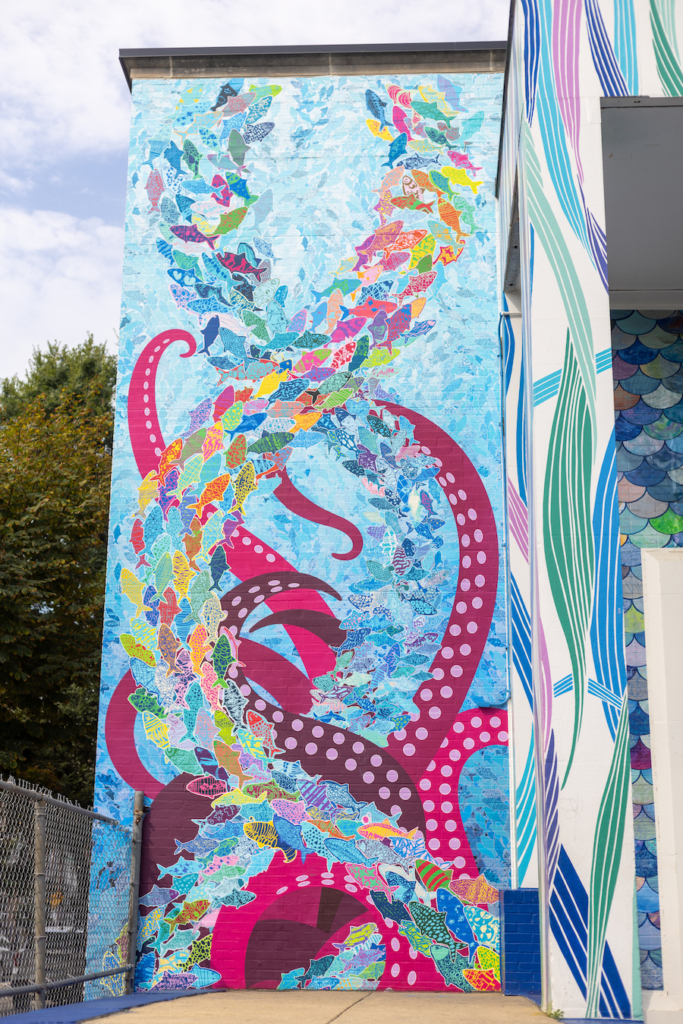
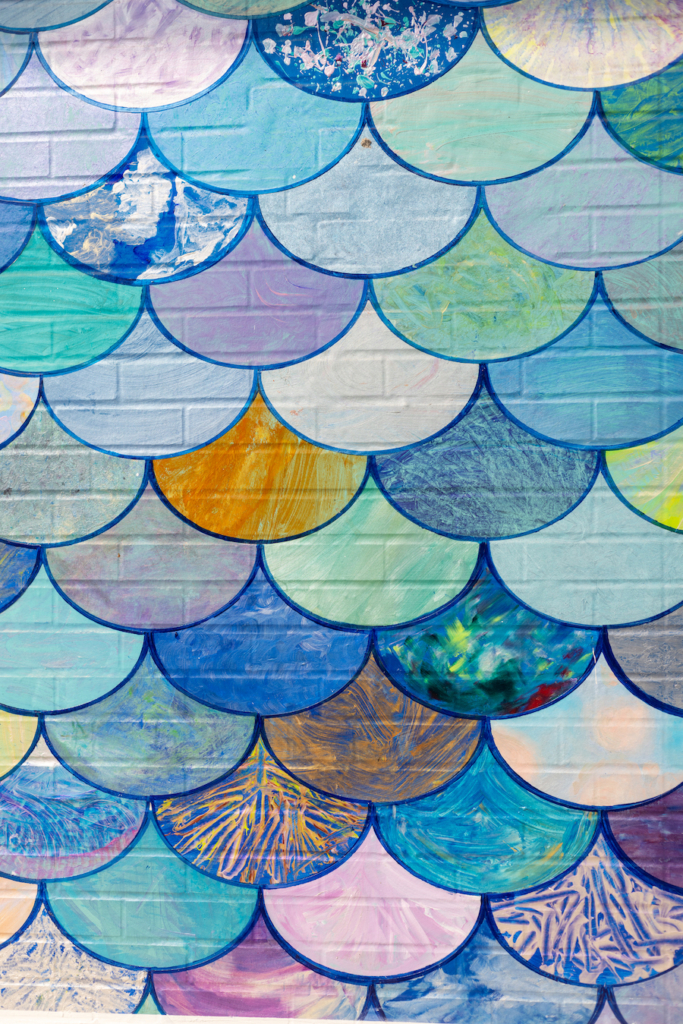
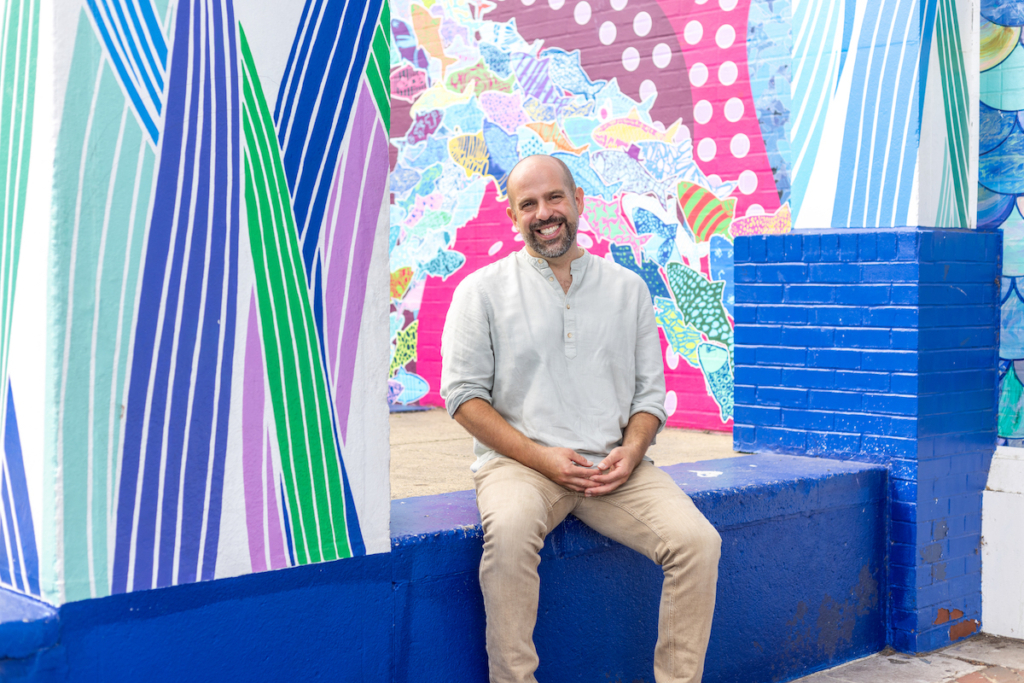
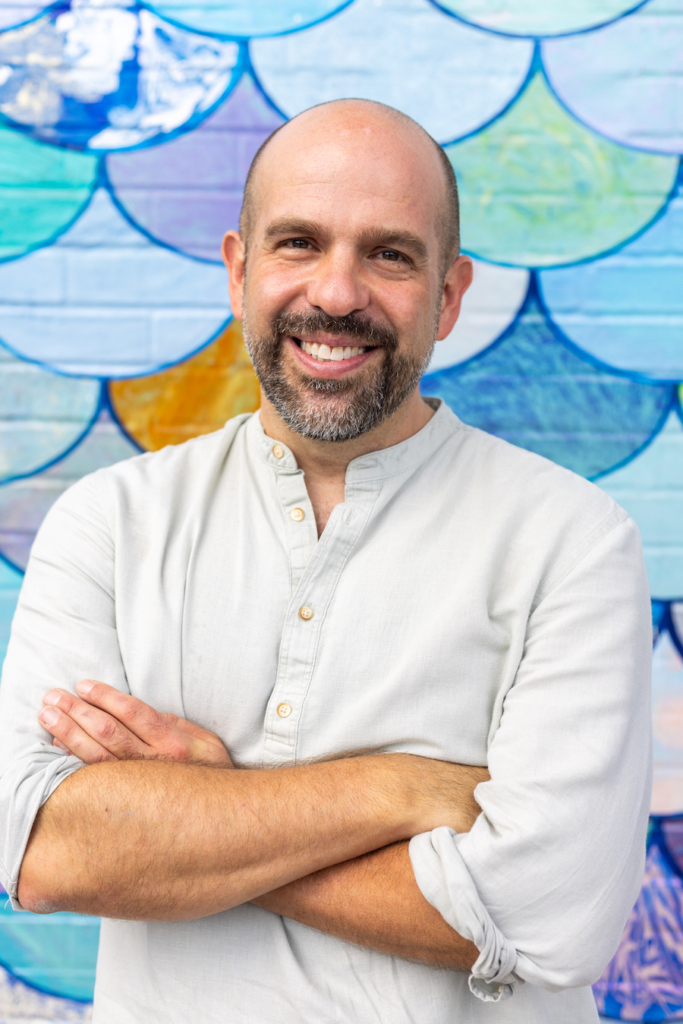
“Public art and projects like this have many entry points that allow for students to connect, collaborate and find meaning,” he explained. “Utilizing mechanical technology, they activated the laser cutter and 3D printer to create an exact architectural model of the building.
“This was an important way to make something small and less intimidating, then being able to scale up the design to fit the magnitude of the entranceway they were dealing with.”
Volta’s father is a software engineer, and his son grew up learning about and hearing stepper motors and other machinery.
“Since I was a teenager, I would often find ways to integrate technology into art making,” he recounted, “and I love allowing the technology to help give form to what is possible.”
Volta has always been interested in art’s connection to technology. In “Ocean Songs,” the drawings of fish were inspired by patterns in nature – like a seashell or a snowflake – that are everywhere, he points out.
When Volta and his young collaborators painted the fish scales, they “mixed iridescent, transparent, and opaque paint as if we were scientists growing art in a petri dish,” he remembered.
They found beauty in the quiet aspects of nature, a realization that can keep creative wheels churning for a lifetime.
